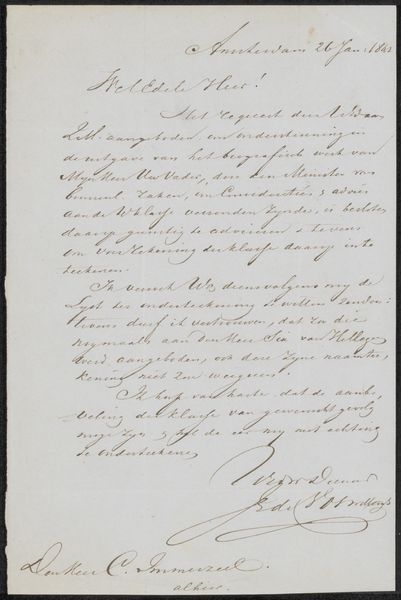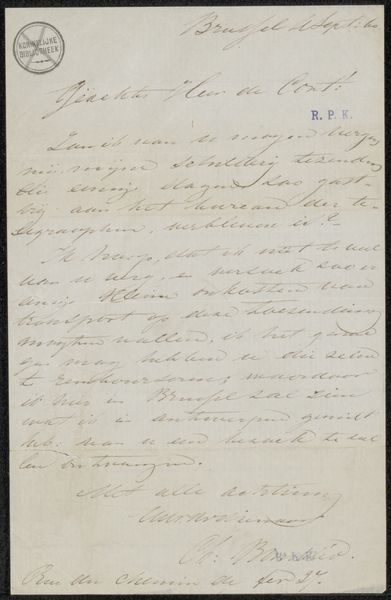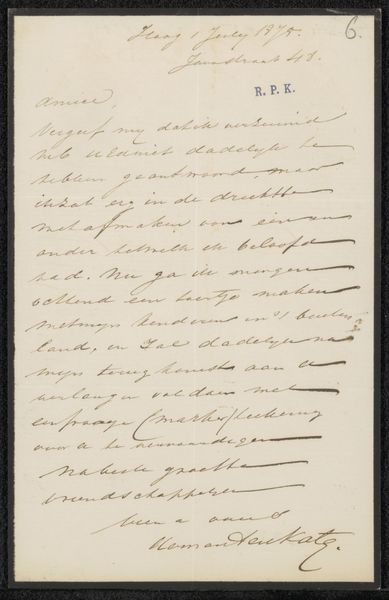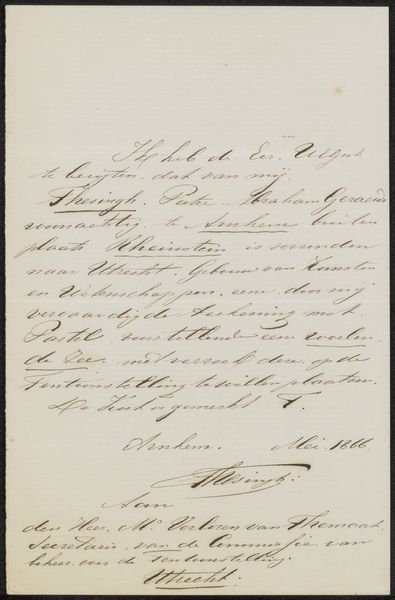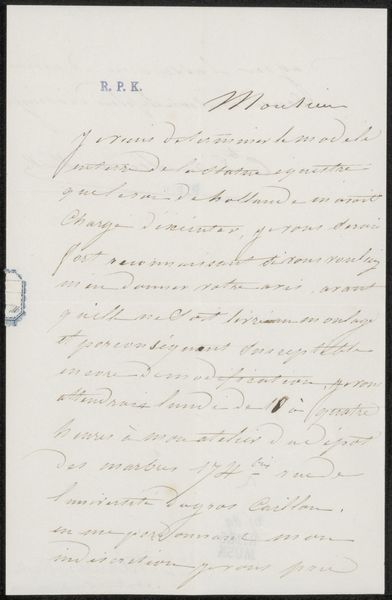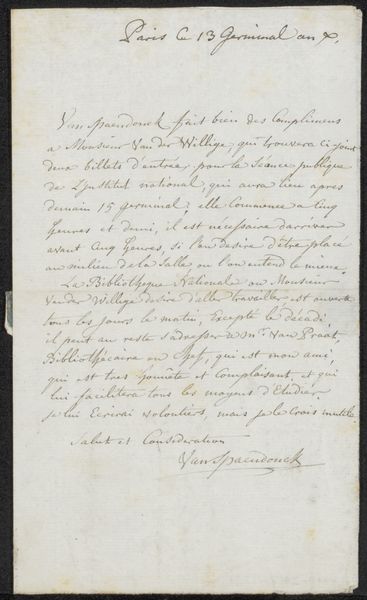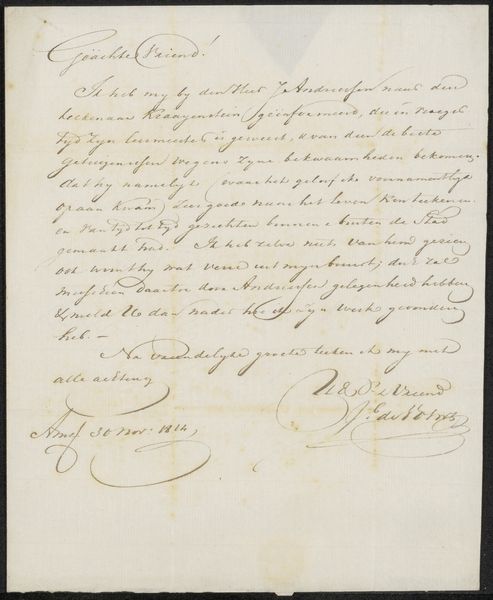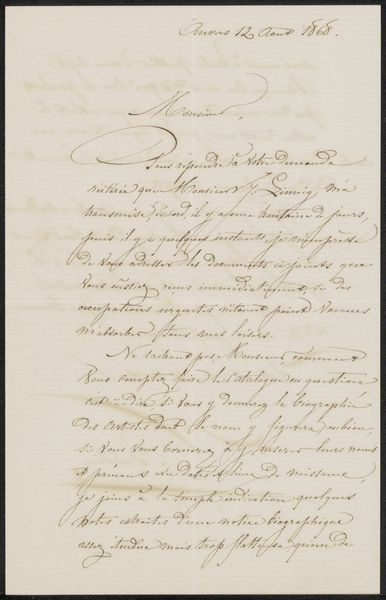
Copyright: Rijks Museum: Open Domain
This is a letter to Jan Weissenbruch by Charles Rochussen, created in 1856. At first glance, the letter presents a study in contrasts – the stark white of the paper against the intricate dark brown calligraphy. The top left corner is torn, which reveals the fragility of the paper. The handwriting, with its varying thickness, gives a sense of rhythm and movement. Rochussen's choice to use handwritten text over printed forms engages with how written text functions as a sign. Each stroke, each flourish, is a signifier, pointing not only to a word but also to the writer's presence, their personality imbued in the ink. The neat rows of text contrast with the flamboyant signature at the bottom, destabilizing the formality of written correspondence. It elevates the everyday act of letter-writing to the level of artistic expression. Ultimately, this letter, with its interplay of textures and forms, invites us to consider the boundary between utility and art, communication and expression.
Comments
No comments
Be the first to comment and join the conversation on the ultimate creative platform.
